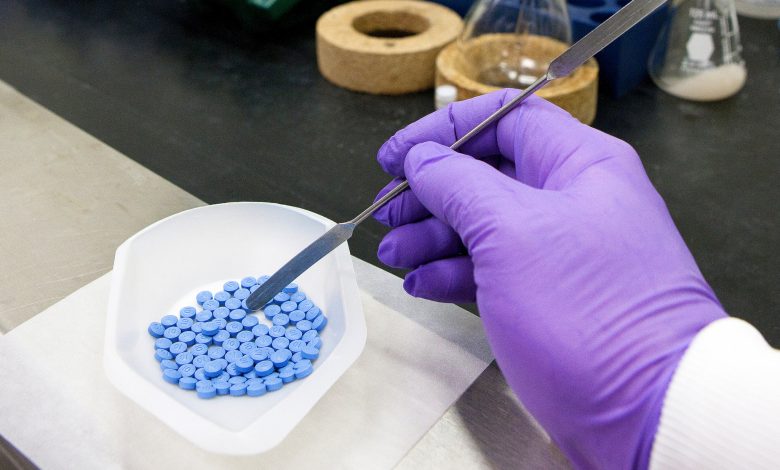List Of Tablet Coating Problems And Solutions To Fix It

What is a tablet medication?
Tablet medication refers to a form of oral solid dosage form in which a specific amount of an active pharmaceutical ingredient (API) is compressed into a tablet shape. Tablet medications are widely used for the delivery of various types of medications, including prescription drugs, over-the-counter medications, and supplements.
Tablets are composed of the active pharmaceutical ingredient, which is the therapeutic substance responsible for the desired pharmacological effect, along with other inactive ingredients known as excipients. Excipients are added to the tablet formulation to aid in the manufacturing process, improve the stability and bioavailability of the drug, and enhance the patient experience.
The excipients used in tablet formulations can vary depending on the specific medication and desired characteristics of the tablet. Common excipients include binders, disintegrants, fillers, lubricants, and coatings. Binders help hold the tablet ingredients together during compression, while disintegrants promote the tablet’s disintegration and dissolution in the gastrointestinal tract. Fillers or diluents are added to provide the required bulk and aid in tablet formation. Lubricants are included to reduce friction during tablet compression, and coatings may be applied to provide protection, improve appearance, or modify drug release properties.
A coated tablet is a type of tablet medication that has an additional layer or coating applied to its surface. The coating is a thin film or coating material that covers the tablet core, which contains the active pharmaceutical ingredient (API) and other excipients.
Coating tablets serve various purposes, including:
1. Protection: The coating provides a protective barrier around the tablet, shielding it from environmental factors such as moisture, light, and air. This helps maintain the stability and integrity of the medication, preventing degradation or alteration of the API.
2. Taste and Odor Masking: Some medications have an unpleasant taste or odor. The coating helps mask these sensory attributes, making the tablet more palatable and easier to swallow.
3. Swallowability: Coating tablets can improve their ease of swallowing. The smooth coating reduces friction and enhances the tablet’s glide down the throat, making it more comfortable for patients, especially those who have difficulty swallowing large or uncoated tablets.
4. Controlled Release: In certain cases, the coating is designed to control the release of the medication. Controlled-release or extended-release coatings are formulated to release the drug gradually over time, providing a sustained therapeutic effect and reducing the frequency of dosing.
5. Aesthetics and Identification: Coated tablets often have an appealing appearance, with a uniform color, glossy finish, and printed markings for identification. This helps patients recognize and distinguish their medications accurately.
Coatings for tablets can be made from a variety of materials, including polymers, cellulose derivatives, sugars, waxes, and shellac. The selection of the coating material depends on factors such as the desired functionality, compatibility with the medication, regulatory requirements, and manufacturing considerations.
Tablet Coating Problems
Tablet coating problems mostly arise during the medication manufacturing process and may result in various issues with the appearance, stability, and overall quality of the coated tablets. Some common tablet coating problems include:
1. Uneven Coating: This problem occurs when the coating material is not distributed evenly on the tablet surface. It can lead to variations in color, thickness, and texture, affecting the tablet’s appearance and potentially its performance.
2. Cracking or Peeling: Tablets with cracked or peeling coatings can indicate inadequate adhesion between the coating material and the tablet core. This problem may arise due to improper coating formulation, insufficient drying time, or issues with the coating process.
3. Mottling or Spotting: Mottling refers to the presence of uneven patches, spots, or discoloration on the tablet surface. It can result from inconsistent distribution of the coating material, improper drying, or interactions between the tablet core and the coating solution.
4. Rough or Sandy Texture: Tablets may develop a rough or sandy texture if the coating material does not form a smooth and uniform film during the coating process. This problem can affect the tablet’s appearance and patient acceptability.
5. Sticking or Picking: Sticking occurs when coated tablets adhere to each other, leading to difficulties in separating them. Picking refers to the removal of small pieces of the coating during handling or packaging. Both problems can be caused by inadequate drying, improper coating formulation, or issues with the coating equipment.
6. Color Fading or Variation: The color of coated tablets may fade or vary over time due to factors such as exposure to light, moisture, or temperature. This can affect the stability and aesthetics of the tablets.
Solutions To Tablet Coating Problems
When tablets have coating problems, it’s important to take prompt action to identify the root cause and implement appropriate solutions. Here are some steps you can take when faced with tablet coating problems:
1. Identify the Problem: Carefully examine the tablets to determine the specific coating issue. Assess the appearance, texture, color, adhesion, and any other observable defects. This initial assessment will help guide your investigation.
2. Investigate the Root Cause: Trace back the problem to its source. Review the coating process parameters, formulation, equipment, and environmental conditions to identify potential factors contributing to the coating problem. This may involve analyzing the coating solution, reviewing the coating equipment settings, and assessing the manufacturing procedures.
3. Adjust Process Parameters: If the problem is related to process parameters, such as spray rate, drying time, or air pressure, consider adjusting these variables within acceptable limits. Optimize the coating process to achieve a more uniform and consistent coating.
4. Review Coating Formulation: Examine the coating formulation, including the choice of coating material, additives, and solvents. Ensure that the formulation is appropriate for the tablet characteristics and the desired coating properties. Adjustments in the formulation may be needed to improve adhesion, color uniformity, or texture.
5. Verify Equipment Functionality: Check the coating equipment for any malfunctions or inconsistencies. Ensure that the equipment is properly calibrated, maintained, and cleaned. If necessary, repair or replace faulty components that may be contributing to the coating problems.
6. Implement Corrective Actions: Based on the investigation, develop a corrective action plan to address the specific coating problem. This may involve modifications to the coating process, formulation adjustments, equipment upgrades, or changes in operating procedures. Document and communicate these actions to relevant personnel.
7. Conduct Validation and Testing: After implementing corrective measures, validate the changes by conducting trials and testing the coated tablets. Perform quality control tests to assess the effectiveness of the corrective actions and ensure that the coating problem has been resolved.
8. Monitor and Improve: Establish a monitoring system to track the coated tablets’ performance over time. Continuously evaluate the coating process, conduct regular quality checks, and address any emerging issues promptly. Implement ongoing process improvements to enhance the overall coating quality and minimize the occurrence of future problems.
Remember, if you encounter persistent or complex coating problems, it may be beneficial to consult with experts in tablet manufacturing, coating technology, or pharmaceutical formulation to gain additional insights and expertise.





